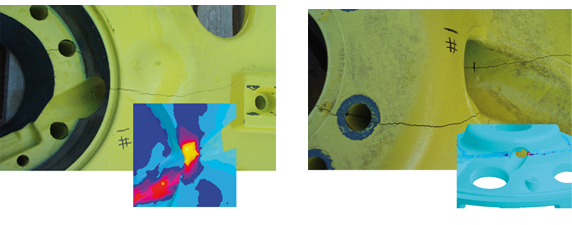Solving a Weighty Cracking Problem
Wheel weights are used on farm machinery to improve traction, as well as to balance tractors loaded with optional equipment. These gray iron castings didn‘t appear to have any defects after casting and did not show any obvious cracks or discontinuities during machining and painting. However, when the weights were mounted to the wheels, cracks appeared. Simulation of residual stresses with MAGMASOFT® showed that the material around the valve stem hole was damaged in the casting process. The residual stresses were not high enough to crack the casting during cooling, but the added load during mounting led to stresses exceeding the strength of the cast iron. Additionally, high strains and strain rates during solidification, indicators for hot tearing, led to damaging conditions in the area where the crack migrated through the casting.
The conclusion was that the design of the casting needed to be modified. With the new design, none of the castings failed during mounting.
This example shows how casting process simulation can be used as a communication tool between foundry and designers.
